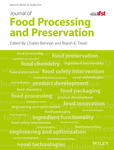A rapid and reliable method for the specific detection of aflatoxigenic fungi in groundnut and rice samples
Abstract
Aflatoxin contamination is a serious food safety and economic concern for the agriculture and processing industry throughout the world. Aflatoxins are the most potent carcinogens; therefore, an early detection of aflatoxin-producing fungi is essential for ensuring food safety. In the present work, a rapid and sensitive PCR method for the detection of potential aflatoxin-producing molds in groundnut and rice samples was developed. This PCR assay can detect the aflatoxigenic fungi in the contaminated samples directly without the need of fungal enrichment. The results showed a specific PCR amplification product in aflatoxigenic fungi (Aspergillus parasiticus and Aspergillus flavus) contaminated groundnut and rice samples even at a low spore count. In contrast, no amplification products were observed in nonaflatoxigenic fungi (Aspergillus oryzae) contaminated samples as well as in healthy groundnut and rice samples. Quantification of aflatoxins for the validation corelated well with the amplified DNA bands for aflatoxigenic fungal samples.
Practical applications
The present paper describes a rapid and reliable PCR method for the detection of potential aflatoxin-producing molds in groundnut and rice samples. The developed method is sensitive and rapid, as it detects the aflatoxigenic fungi in the contaminated samples directly without the need of fungal enrichment. The developed method is sensitive because this process detects the fungal infestation at a concentration as low as 102 spores/g. This method can be used to detect the presence of aflatoxigenic fungi specifically, even before the production of aflatoxin to ensure food safety.
CONFLICT OF INTEREST
The authors have declared no conflicts of interest for this article.




